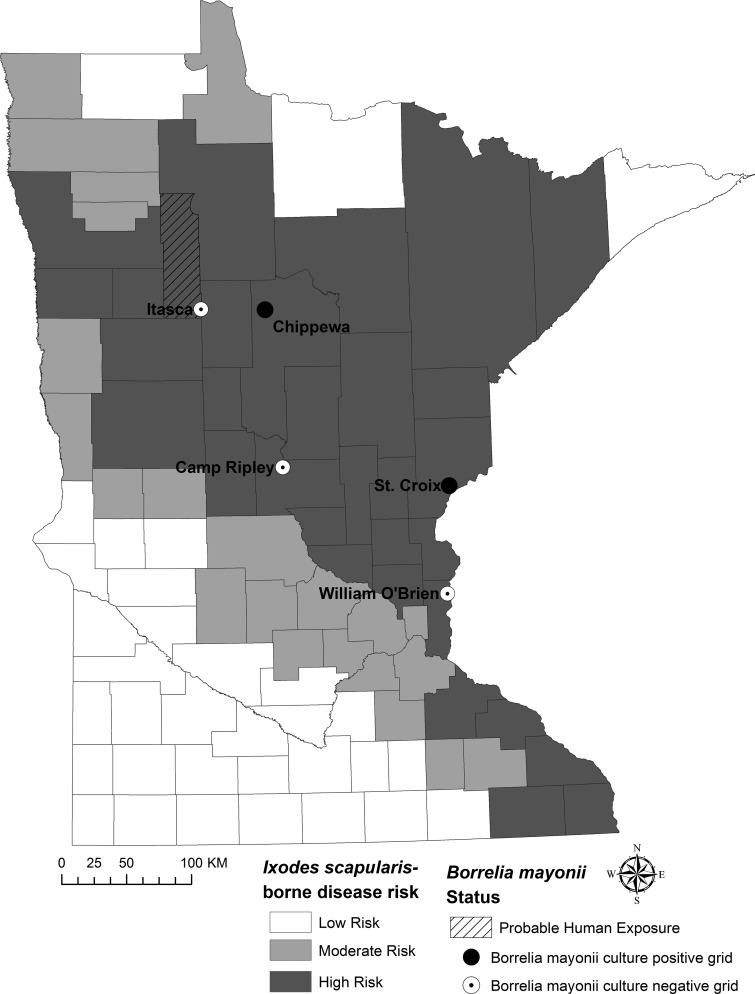Fig. 1.
Location of five small mammal trapping sites sampled during June 2016. Three trapping sites yielded no Borrelia mayonii culture-positive animals (white circles). Borrelia mayonii was cultured from animals trapped at two sites, Chippewa National Forest in north central Minnesota and Saint Croix State Park along the Minnesota border with Wisconsin. County-level designation of Ixodes scapularis-borne disease risk based on the average incidence (cases/100,000 population) of Lyme disease and human anaplasmosis cases reported to the Minnesota Department of Health, 2007–2015. Low risk is defined as < 10, moderate risk is defined as 10–25, and high risk is defined as ≥ 25 cases/100,000 population (http://www.health.state.mn.us/divs/idepc/diseases/lyme/highrisk.html, accessed October 2016). Clearwater County is shown (hatched lines) as a location of probable human exposure to B. mayonii (Pritt et al. 2016a).

